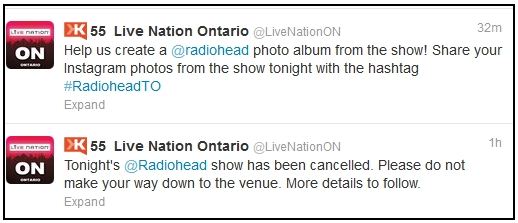 On social media, timing is everything.
On social media, timing is everything.
You might be the next Shakespeare, waxing philosophical on the beauties of life in lyrical 280-character snippets, but if there’s no one there to hear you, what good are your brilliant thoughts?
Whether you’re using social media to promote your business, to find clients, to build a personal brand or any other myriad of reasons, you can use the magic (well, technology, really) of social scheduling to ensure your wise words are actually read.
Before we get into the nitty-gritty of how to schedule posts on social media, let’s talk about the why.
The bad: Social scheduling mishaps
Some people believe that scheduling anything on Facebook or Twitter is inauthentic. After all, social media is about engagement, and it’s hard to engage when you pre-write a status update only to send it while you’re asleep!
Plus, there have been some pretty terrible mishaps in the annals of social media history due to inappropriately timed scheduled tweets. For example, Ticketmaster tweeted a rather oblivious tweet shortly after the stage at a RadioHead concert collapsed this past summer (courtesy of UnMarketing):
Someone in charge of the Ticketmaster account wasn’t paying attention to the tweets they had pre-scheduled, and thus the account sent a tweet asking for photos of the event after the event was canceled. Not good – Ticketmaster got a lot of flack on Twitter about that one.
But this doesn’t mean that scheduling social media posts can’t work for you… it just means you have to pay attention and be smart about it.
The good: Social scheduling pros outweigh the cons
The flip side of scheduled tweets and status updates is multifaceted:
- You can maintain a consistent social presence without being chained to your desk
- You can share articles and ideas that you encounter late at night with your audience when they’re actually awake
- You can tweet while on vacation!
- You can create a batch of on-topic tweets and space them out throughout the day or week
…And there’s lots more!
If you implement it correctly, a social media schedule can help you reach a wide audience when they’ll actually be listening, maintain a consistent publishing calendar, and free up your time for other things – like responding to those three-day-old emails or getting around to that logo redesign.
How to set up a social media schedule
There are many fantastic tools out there to help you create a social media schedule. Here are two of our favorites:
HootSuite
HootSuite is a social media dashboard that lets you schedule tweets, Facebook posts, status updates, etc. It also offers robust analytics, app that integrate other networks like YouTube and LinkedIn, keyword monitoring and much more.
Buffer
Buffer is a lightweight tool that helps you find the best times for your tweets and posts to go out. It measures your audience’s activities using a special algorithm to find the times that they are most likely to interact with your content, and takes care of scheduling your content for you.
Fedica
Fedica has the most advanced tweet scheduler, it uses analytics to drive your publishing, along with automation capabilities (such as RSS scheduling) that help you save time, and support for threads, replies and retweets! Oh and it is also free.
There are plenty of other tools out there, so do a little research and find one that suits you. Fedica, HootSuite and Buffer are all free, but there are some great paid products that allow you to schedule as well.
Once you’ve chosen your scheduling tool of choice, you can set up a social media schedule in 5 simple steps:
- Write 5-20 tweets, status updates or other content that you’d like to schedule. Be sure to keep tweets under 280 characters, and include links to any multimedia – such as photos or video – you reference.
- Copy each of these into HootSuite, Buffer, Fedica or the tool you chose.
- If using HootSuite, select the day, time and social network for each piece of content. If you’re using Fedica or Buffer, just select the social network – it will take care of the timing.
- Note when your schedule ends, and make a note to yourself to pre-write more posts in the next few days.
- Don’t forget to monitor the engagement and responses to your scheduled tweets, and adjust the content and timing based on feedback from your followers.
That’s all there is to it!
How are you going to use the free time your schedule gives you? Let us know in the comments, or tweet to us at @FedicaHQ.

